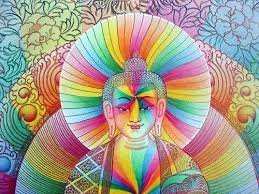Sexuality as an Obstacle Or a Gateway to Liberation?
The Historical Lens
For centuries, conversations around sexuality in India have been shaped not just by society, but also by spiritual traditions. Ancient Hindu texts, temple art, and mythology show us that same-sex love and queer desire were never erased from cultural memory. At the same time, Buddhism and Jainism while deeply progressive in many ways often framed all forms of sexual desire (heterosexual or homosexual) as distractions on the path to enlightenment.
This distinction is important: desire itself, not identity, was seen as the “obstacle.” The body was not condemned, but attachment was.
India’s Contradictions
As a secular nation, India thrives in diversity our constitution protects plurality, but our lived reality often pits tradition against choice. When it comes to LGBTQ+ rights in India, the last two decades have seen dramatic shifts: from the decriminalisation of Section 377 in 2018, to the growing visibility of queer folks in politics, cinema, and fashion.
Yet, old attitudes remain stubborn. Religion is often misused as a weapon to silence queer existence, even when the scriptures themselves are more nuanced than today’s moral policing.
“It’s not homosexuality that was condemned, but obsession. Ancient wisdom asked us to respect our true nature. Isn’t that the very definition of queerness?”
Queerness Beyond Labels
2025’s queer movement in India is no longer about begging for acceptance it’s about reclaiming history and redefining spirituality. From Queer friendly ashrams to Pride celebrations at temple towns, the conversation has shifted. Instead of seeing sexuality as a barrier, communities are exploring how queerness can be a path to authenticity, self-realisation, and freedom.
Key Shifts We See Today:
- Intersection of faith and queerness: Temples, churches, and gurdwaras are slowly opening dialogues on inclusion.
- Queer monks and seekers: LGBTQ+ practitioners of Buddhism and Jainism are carving out safe spaces within spiritual traditions.
- Cultural storytelling: From OTT series to street theatre, the idea that “desire ≠ obstacle” is gaining ground.
- Legal backing: Antidiscrimination debates are now happening in workplaces, schools, and even religious institutions.
Practical Takeaways for Today’s Queer India
- Don’t let “tradition” be misquoted dig into scriptures, and you’ll often find space for diversity.
- Spirituality doesn’t have to mean celibacy; it can mean authenticity.
- Join online/offline queer faith groups to explore intersectional identities.
- Challenge narratives that pit sexuality against spirituality they’re not opposites.
Sexuality has long been branded as an obstacle in Indian philosophy. But in 2025, we know better: it is not sexuality, but shame and suppression that block liberation. Whether queer, straight, or beyond labels, the real lesson from our traditions is simple honour your true self.




